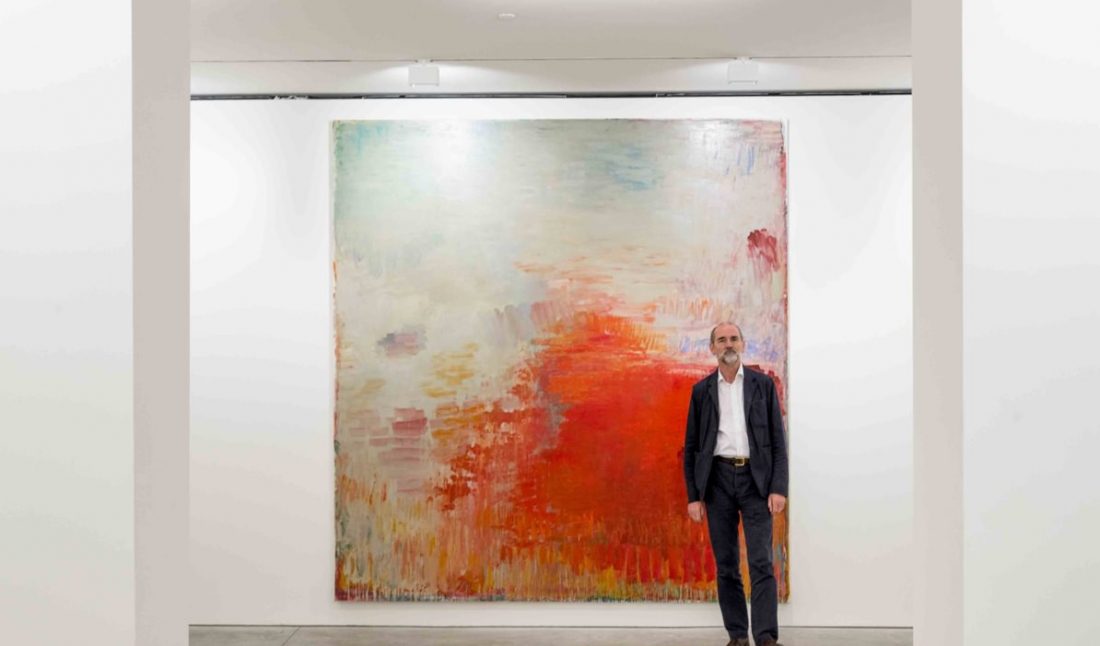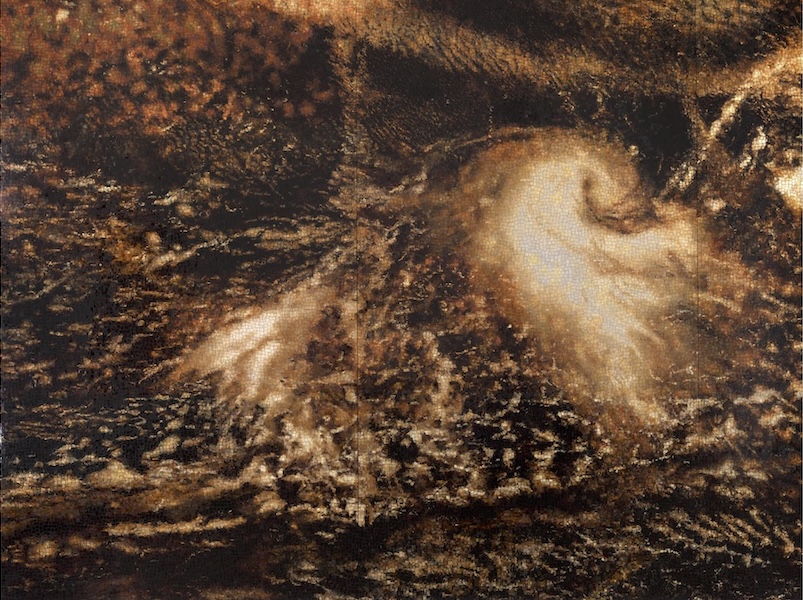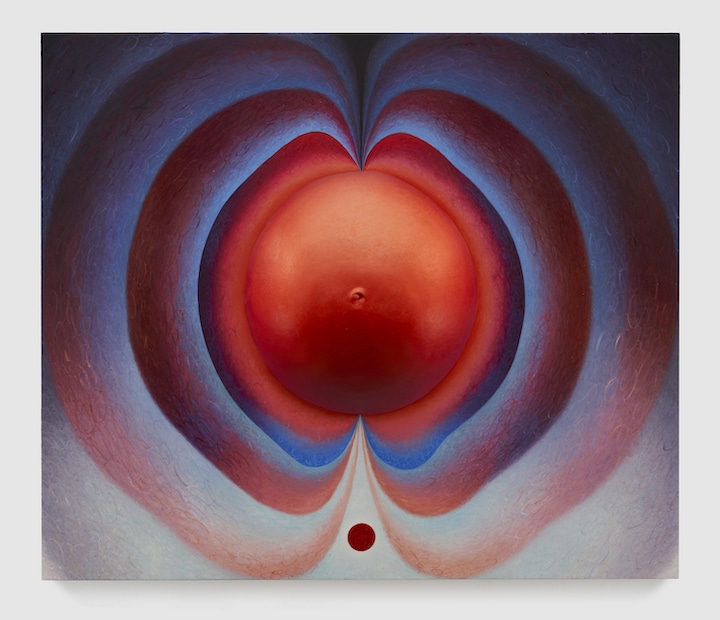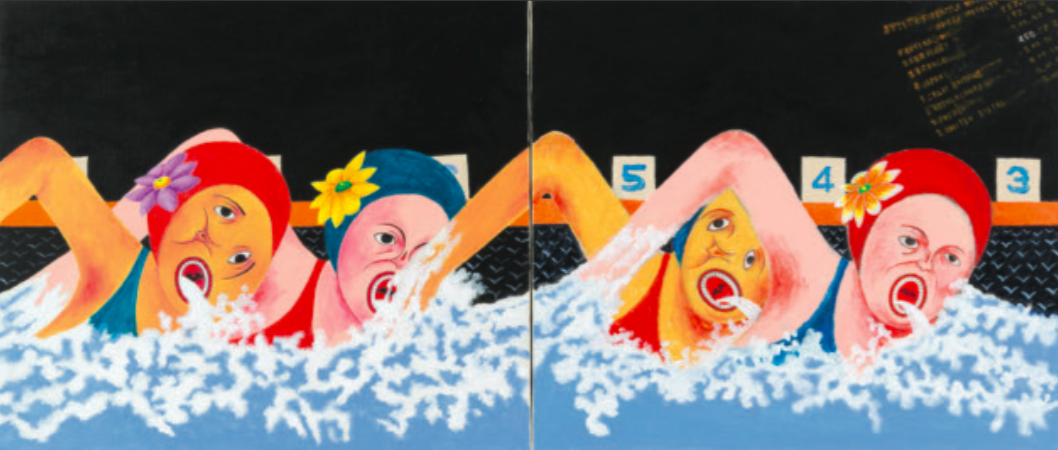This is the last week Christopher Le Brun’s solo exhibition is on view at Friedman Benda gallery in New York. Entitled “New Paintings,” the show features skillfully layered paintings in vivid hues and tactile textures. The works draw on a wide array of cultural allusions, ranging from mythology to music, creating a rich language of abstraction. Le Brun dissects these narratives and strips them down to their raw emotion, relying on color and mark-making to evoke the images beneath. Whitewall recently spoke to Le Brun about the evolution of his painting practice and his expansive career.
WHITEWALL: This is your first solo exhibition in New York in over a decade. How does it feel to be showing in New York now?
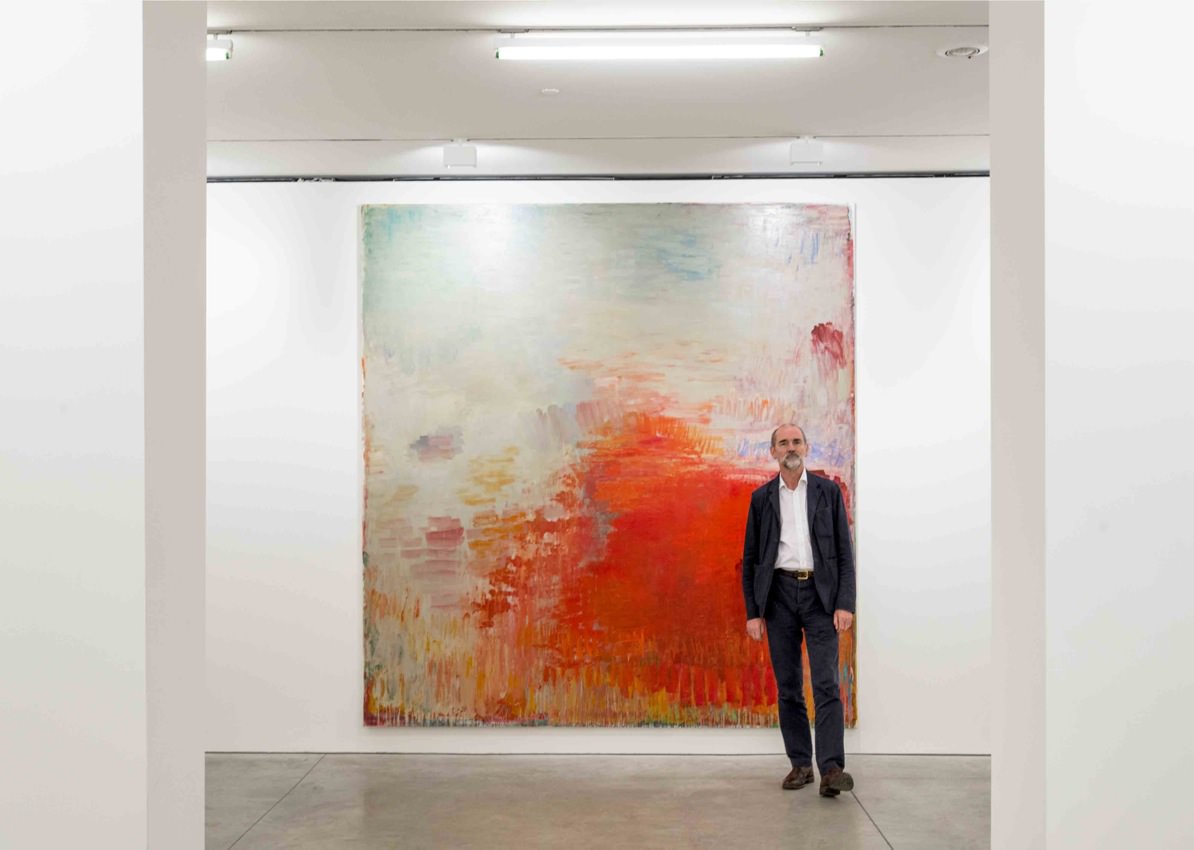 Installation view of “New Paintings,” courtesy of Friedman Benda.
Installation view of “New Paintings,” courtesy of Friedman Benda.
CHRISTOPHER LE BRUN: The timing feels right. I feel it’s an interesting moment in the development of my work. The fact is, I enjoy showing in New York very much and the reaction I get comes as if in a rather different language and it’s a real test.
WW: Your past works have been more representational, taking on a kind of neo-Impressionist style, but this show is all abstraction. What’s caused that shift?
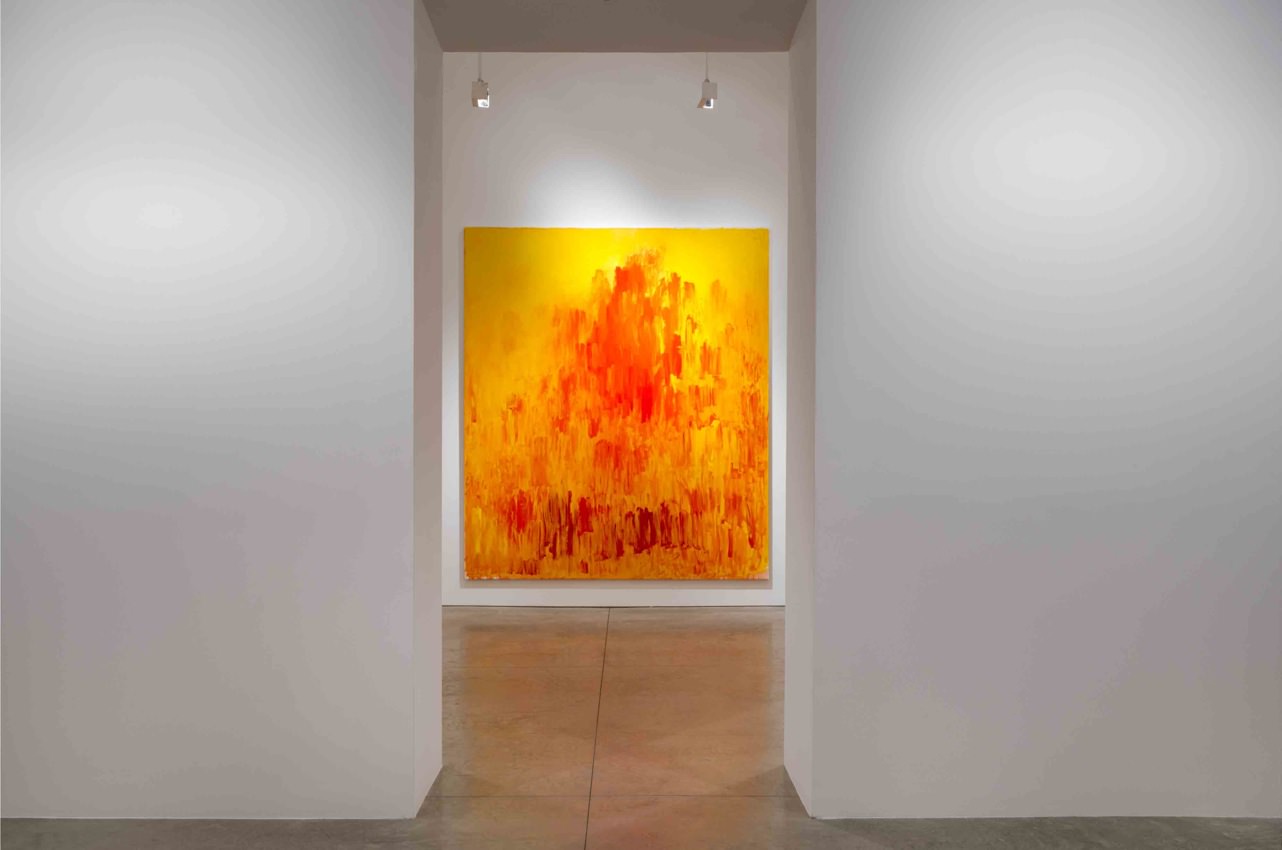 Installation view of “New Paintings,” courtesy of Friedman Benda.
Installation view of “New Paintings,” courtesy of Friedman Benda.
CLB: Since I’ve been painting now for over forty years there’s a considerable history of motifs and approaches to painting. New work in some ways always feels like a summing-up, but I do recognize new elements that either I haven’t seen before, or are from so long ago I’ve forgotten I even thought them. New is quite a difficult idea for me in the context of painting I’m more interested in truth, whatever that might be.
WW: You’ve been the president of the Royal Academy since 2011. Has that experience affected your work or practice at all?
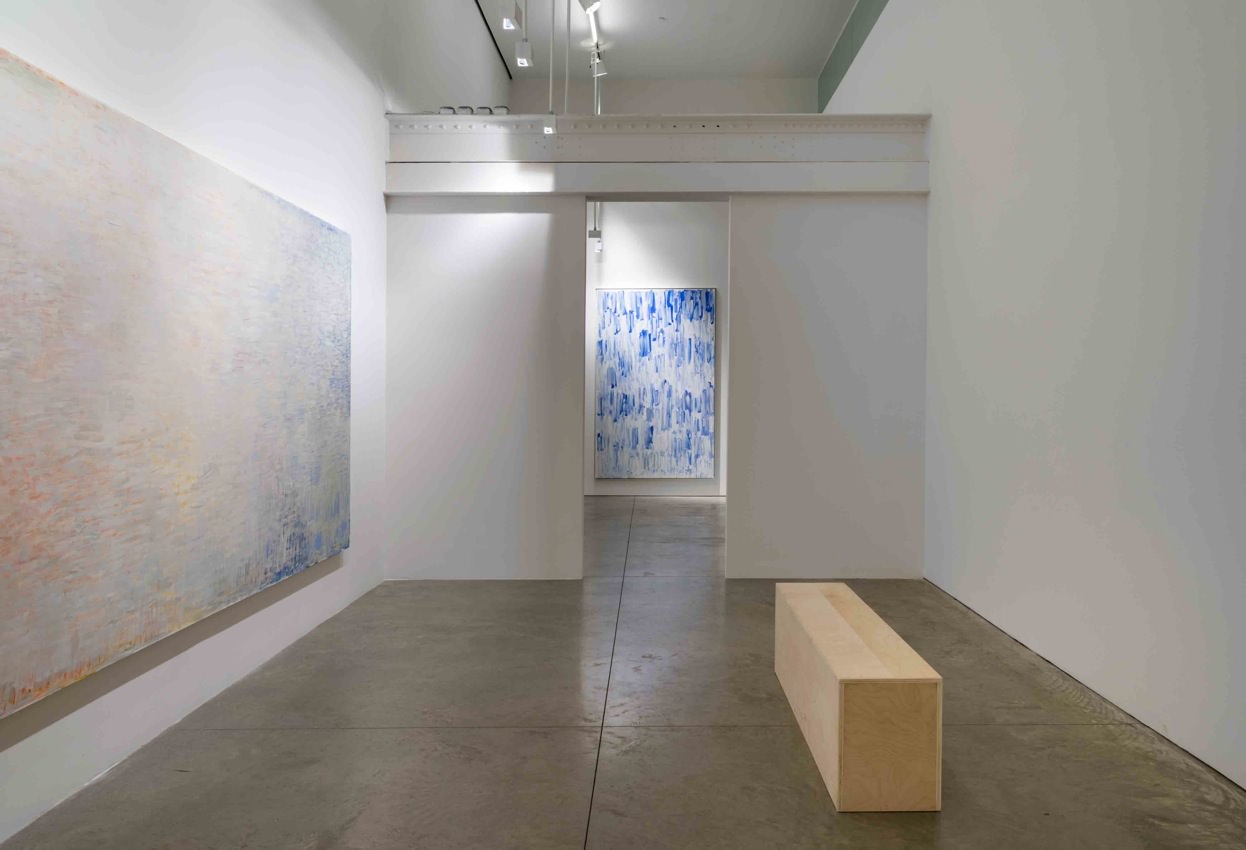 Installation view of “New Paintings,” courtesy of Friedman Benda.
Installation view of “New Paintings,” courtesy of Friedman Benda.
CLB: Yes it has affected my painting, partly because I’m enjoying the role and responsibility and we are entering a great period for the Royal Academy. So that optimism and energy I feel has come into my work and it’s a surprise to me what’s possible. The fact is, it’s possible to make things happen. And actually the concentration of my time and the corresponding intensity has been enormously fruitful.
WW: It’s mentioned that the basis for the painting Walton is Sir William Walton’s opera Troilus and Cressida, and that the painting began with the name of the composer and his two protagonists written at the top and bottom of the canvas. Is this evolution from representation or text into abstraction typical of your process?
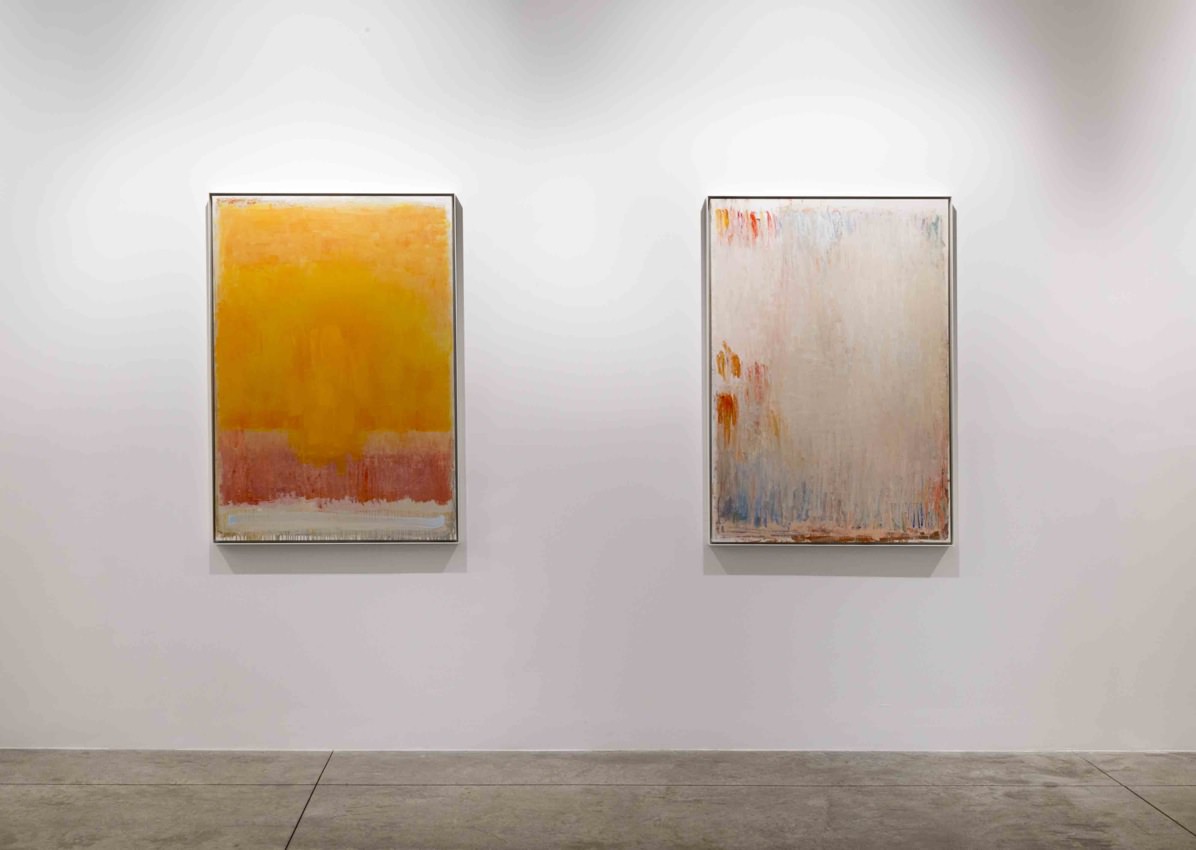 Installation view of “New Paintings,” courtesy of Friedman Benda.
Installation view of “New Paintings,” courtesy of Friedman Benda.
CLB: My thinking about painting has always been complicated and layered and I return to ideas and themes over many years. It’s almost as if there’s an underground current running continually that throws up a different emphasis from time to time. I’ve never made my painting by a direct route it seems to come about almost while I’m looking the other way, so things thought about in the field of music or poetry can emerge transformed in a way that I don’t understand but I know have value for me.
WW: Did you listen to this opera while you were painting those? Do you listen to music at all while working in your studio?
CLB: Yes I do listen to music, I’ve spent my life educating my musical taste courtesy of BBC Radio 3 but when I’m absolutely concentrating I just forget to play the music.
WW: There’s a lot of emotion in these works. With abstraction, do you rely most on the medium itself to express these ideas in texture and hue, or is there often an underlying narrative of some kind as there was with Walton?
CLB: I’m pleased that you see the emotion in the work; it’s the point. I’m moved by painting but it’s a subtle art form and perhaps not so readily appreciated at first but it has tremendously powerful potential to act on the body and our senses and it contains a powerful physical account of truth that we recognize. I know my youngest son literally stepped back when he first saw Enter the City so there you see the body responding before the conscious self has time to react.
WW: A lot of the paintings’ bottom edges showed drips, indicating many layers of paint in colors that are not as prominent. Almost like you’ve gone through a few drafts before the final piece is complete. How do you know when a painting is finished, especially since representation isn’t the goal with this series?
CLB: Seems to me, painting comprises nothing but drafts and essays, and even at the end the reality is one walks away from the painting and returning say in the morning it seems to tell you itself whether it’s complete. I use my physical reaction to the painting to know when I’ve reached that final point, because the painting returns my gaze without requiring anything extra for its sense of itself. I’m not sure representation ever was the goal of my work it’s far more a matter of it having an independent identity that will last and continue to speak.
Christopher Le Brun’s “New Paintings” is on view at Friedman Benda gallery through October 18.






